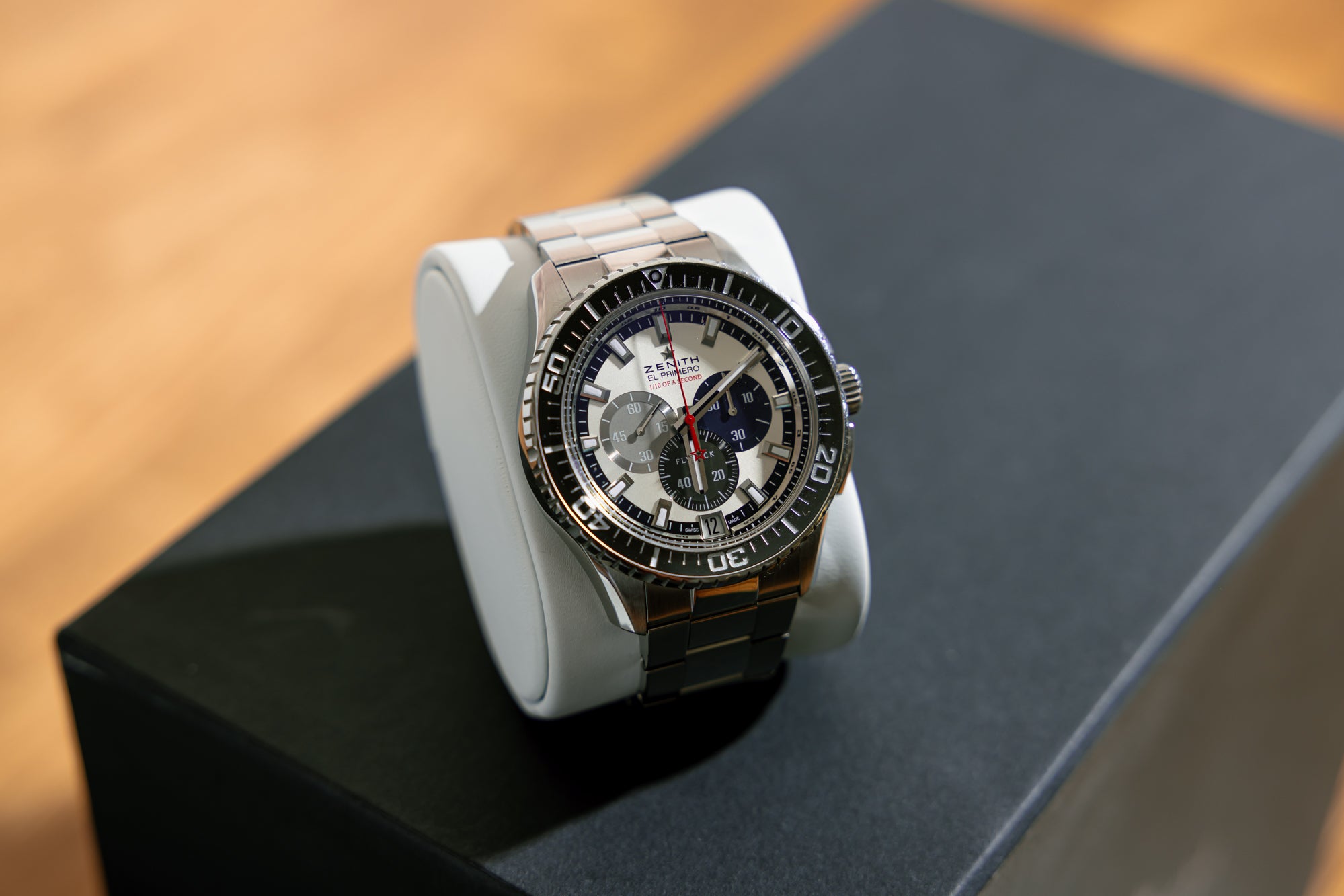Vintage watches get an undeserved bad rep. Really, they aren’t as fragile as you think, but where do you stand with water resistance and vintage watches? Let’s find out…
One of the most common questions we get asked here at Charles Martin Watch Company is, “How waterproof is my watch?”. The short answer is it’s not. Despite the marketing terminology or language that luxury watch brands may use to suggest waterproofness in a watch, there isn’t a single one that is. Moreover, they’re water-resistant, but there are still variables to consider, even in those watches designed for water.
Now is probably a good time to mention that it’s illegal to claim that a watch is waterproof, so be aware of any brand claiming to make watches. But crucially, different water-resistant ratings are important to note when investing in a watch, especially if it’s pre-owned and you plan on wearing it daily. There is a difference between how you would expect a new watch to perform underwater versus a vintage one. The crux of the matter is that extra care should always be taken when submersing an aged watch in water, and here’s why.
Vintage Watches and Water Resistance
Over time, a watch's rubber seals and gaskets deteriorate as it ages. The steel-on-steel contact of the elements in a watch can also warp. This can affect the water-resistant capability of a watch. Though these tolerances may not be as tight as they once were, most vintage watches are fine for general tasks associated with daily use. Generally speaking, non-hermetically sealed case backs and crowns will not be water-resistant. However, some old Omega watches have press-in backs that feature gaskets for upholding water resistance, and they go against this rule of thumb.
Water-resistant watches should always have a gasket that acts as a seal. Regardless of the crown and caseback design, without a gasket, a watch cannot uphold its water resistance and should never be submerged in water. When investing in a vintage watch, you should also take note of the quality of the crown and stem tube. For reasons like these, you should always err on the side of caution when it comes to getting a vintage watch wet. At Charles Martin, we thoroughly examine all our watches and service them before they are ready to be sold, which takes the guesswork out for you. Some pre-owned sellers, however, may not complete the full checks or meet the same standards. With second-hand watches, you can expect water resistance to be unreliable or incomplete to some extent.
It’s important to note that here at Charles Martin Watch Company, the thorough processes we carry out when servicing a watch include an extensive pressure test to ensure your watch works as it should before we return it to you.
Watch Service and Pressure Test
It’s important to maintain the health of your watch by regularly servicing it and seeking repair work whenever necessary. As part of our 12-stage process, we pressure test your watch before returning it to you. Doing so enables you to return to enjoying your watch as you always have done or to give an old watch a new lease of life. Maybe you purchased a pre-owned watch from elsewhere and are unsure whether to risk getting it wet. We can help.
At Charles Martin, our 12-stage process starts with examining your watch, followed by separating the bracelet and bezel from the case itself. Those pieces are polished and cleaned while the watch movement gets a complete stripping down. During this phase, we fully examine all components for defects, damage or wear. Anything needing a replacement gets one before we clean the movement inside an ultrasonic machine. Stage 7 includes reassembling the case, bracelet, and bezel and replacing any seals. These seals help the watch uphold its water resistance, hence being a crucial part of a watch service.
After this, our experts at Charles Martin will conduct three separate water resistance tests. These include a vacuum test, a water submersion test, and a condensation test. The watch technician will then reassemble the movement, returning it to the watch and oiling it in at least 50 different points. To ensure the watch beats in time, it is calibrated by a skilled technician. Then, the entire watch is reassembled before being monitored and tested for accuracy for up to 72 hours.
Watch Resistance and Vintage Watches – The verdict
So, should you dive and swim with a vintage watch? Probably not. While there are no hard and fast rules to this, the vast majority of older watches will not perform to the same degree as new water-resistant watches do. It’s certainly possible to restore the water resistance of an old watch to a degree. But since many are heirlooms or valuable investments, getting a daily beater for swimming and the beach may be wiser.
At Charles Martin, we offer a diverse selection of pre-owned watches ranging from vintage to relatively new models. Offering a memorable walk-in-and-shake-hands experience, customers will be provided with an environment they’ll want to recommend to friends and family for years to come. By recognising the importance of a brick-and-mortar store for avid watch enthusiasts, our solid storefront attracts collectors from far and wide to share their love of all things horological.
For more information on any of the watches you’ve seen listed on our online store, call and speak to a friendly sales team member at 01889 560 002 or contact us via sales@charlesmartinwatchcompany.com. Alternatively, feel free to call in to our Lichfield-based store here in Staffordshire to browse and try on some of our favourite current pieces.


0 comments